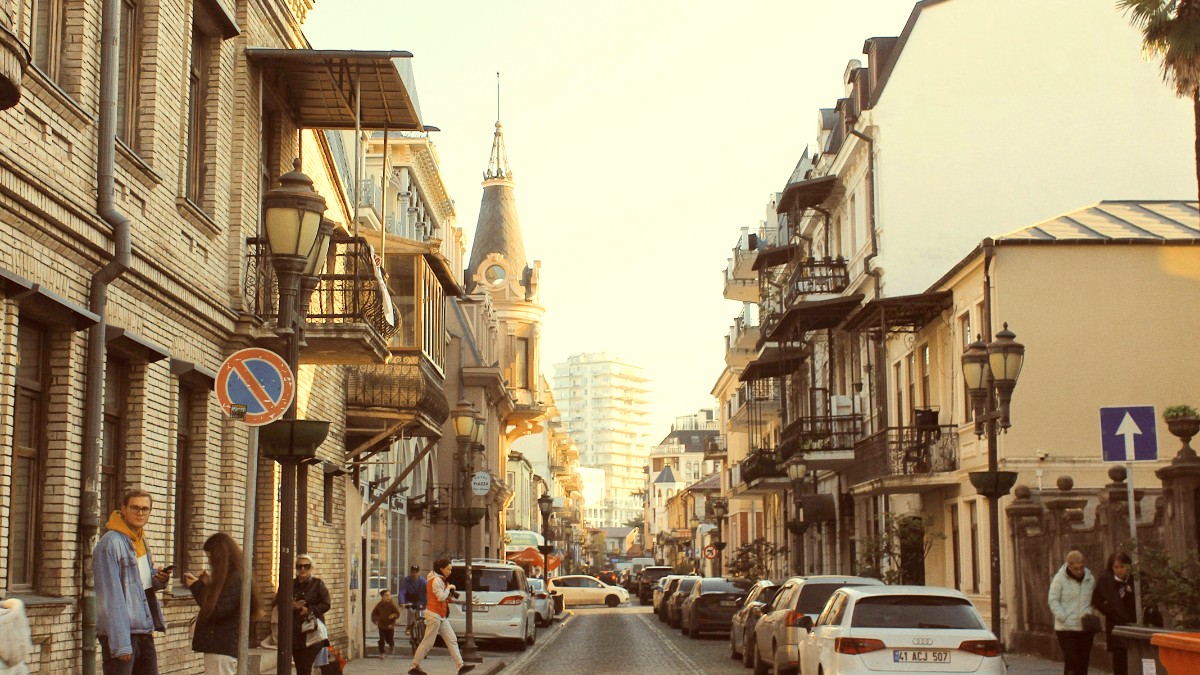
Adjara, Georgia
Gonio Apsaros Fortress: Approximately 15-20 kilometers south of Batumi, near the Turkish border. This well-preserved Roman-Byzantine fortress dates back to the 1st century AD. A historical site with significant archaeological importance and a small museum.
Mtirala National Park: About an hour's drive inland from Batumi. This lush, subtropical national park makes for nature exploration and hiking. It includes marked trails to waterfalls, a small lake, and diverse flora and fauna. The park's visitor center provides guidance.
Makhuntseti Waterfall & Queen Tamar Bridge: In the Keda region, about a 40-minute drive from Batumi. A popular scenic spot featuring a beautiful tiered waterfall and an ancient arched stone bridge from the 12th-13th century.
Keda, Shuakhevi, Khulo (Upper Adjara): Main administrative centers of the mountainous Adjara region. Accessible as a longer day trip. Known for traditional villages, stunning mountain scenery, ancient bridges, and local wine production (Keda is famous for its Chkhaveri grape).
Kobuleti: A coastal town north of Batumi (approximately 30-40 minutes drive). Kobuleti is known for its long, sandy (or fine pebble) beach, often less crowded than Batumi's during peak season. A more relaxed beach resort atmosphere.
Deciding between an organized tour and independent travel for day trips:
Often include transportation, a knowledgeable guide, and sometimes lunch. Good for reaching multiple spots efficiently and for those preferring a structured experience. Many local tour operators in Batumi have day trips to these destinations.
Generally more affordable for solo travelers or duos when relying on marshrutkas. More timing flexibility and how long you spend at each site. It does involve more planning, navigation, and local taxi arrangements for areas public transport does not reach.
Beyond Batumi's city limits, the Adjara region displays diverse natural landscapes for exploration.
A prime natural escape, part of the Colchic Rainforests and Wetlands UNESCO World Heritage Site. Recognized for its relict forests and high biodiversity. Offers hiking, waterfalls, and a zipline.
Located further inland, a more remote protected area. It showcases diverse ecosystems, including ancient forests, high mountain lakes, and waterfalls. Good for experienced hikers seeking untouched nature.
These wetlands, north of Batumi, are highly important for migratory birds. They present an unique environment of swamps and peat bogs, a habitat for numerous bird species.
The mountain ranges of Adjara, especially along the routes leading to Keda, Shuakhevi, and Khulo, display stunning scenic views. You will see terraced hillsides, deep river gorges, and traditional mountain villages amidst lush greenery. The drive itself makes for a scenic experience.
The region presents specific natural occurrences depending on the time of year.
Extend your cultural exploration beyond Batumi's city center to uncover more of Adjara's historical and traditional heritage.
Petra Fortress: Located on the coast north of Batumi, near Tsikhisdziri. These are impressive ruins of an ancient Byzantine fortress city, dating back to the 6th century. Petra was a strategically significant trading hub and military outpost, presenting a glimpse into the region's early Christian and Byzantine history. Its hilltop location has scenic views of the Black Sea.
The villages of Upper Adjara (like those in Keda and Shuakhevi municipalities) present a profound insight into traditional Georgian village life. Here, you can observe agricultural practices and often taste local homemade wine directly from producers.
Several small, historic churches and monasteries are throughout the Adjara region. These sites, often nestled in picturesque natural settings, display a quiet space for contemplation and a look into Georgia's deep Orthodox Christian heritage.
Beyond physical sites, the cultural fabric of Adjara includes traditions.
Engage with vendors at the Batumi Central Market to see daily life and local produce.
Learn to prepare traditional Adjarian dishes, often in a local home setting.
If invited to a traditional Georgian feast, embrace the communal dining and toasting.
For more time, combining Batumi with other regions of Georgia allows for comprehensive country exploration.
Take the high-speed train from Batumi to Tbilisi (5-6 hours). Add a day trip to the Kakheti region (east of Tbilisi), Georgia's main wine area, for wine tasting and ancient monasteries.
For mountain lovers, extend your trip to Svaneti, a stunning region in the high Caucasus. Explore ancient Svan towers (UNESCO World Heritage) and unique culture. Ushguli is a highlight.
Travel to Kutaisi (2-3 hours). Visit Bagrati Cathedral (UNESCO), Gelati Monastery (UNESCO). Take day trips to Prometheus Cave and Martvili Canyon for boat tours and nature walks. Good for a 1-2 day extension.
Tbilisi → Kakheti (wine region) → Mtskheta (ancient capital) → Kutaisi (western Georgia) → Mestia/Svaneti (mountains) → Batumi (Black Sea coast). This route makes for Georgia's diverse landscapes, history, and culture.
Tbilisi → Kazbegi (Stepantsminda) → Mestia (Svaneti) → Kutaisi → Batumi. This route prioritizes the dramatic scenery of the Caucasus mountains and ends with coastal relaxation.
Tbilisi → Kakheti → Kutaisi → Batumi. This route is good for those interested in Georgia's wine heritage and Western historical sites without extensive mountain trekking.